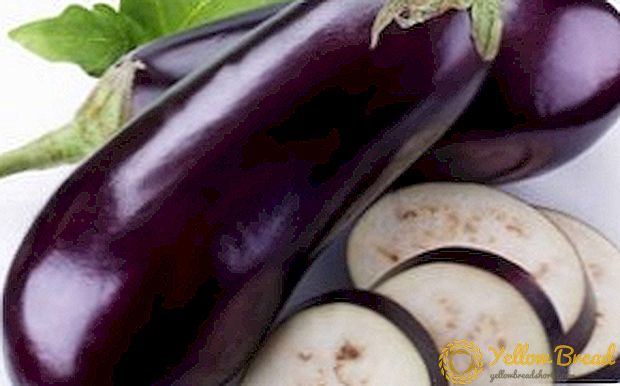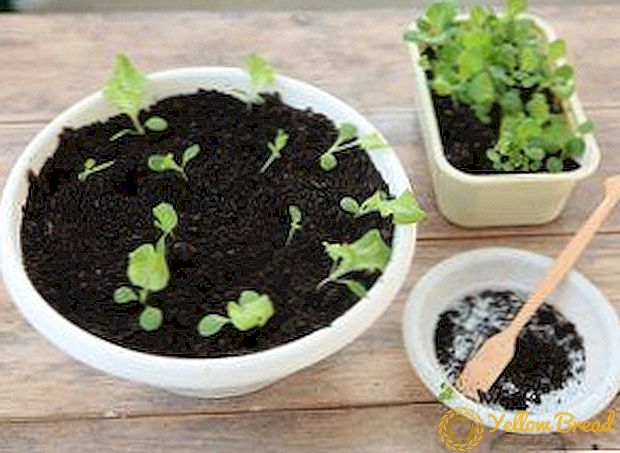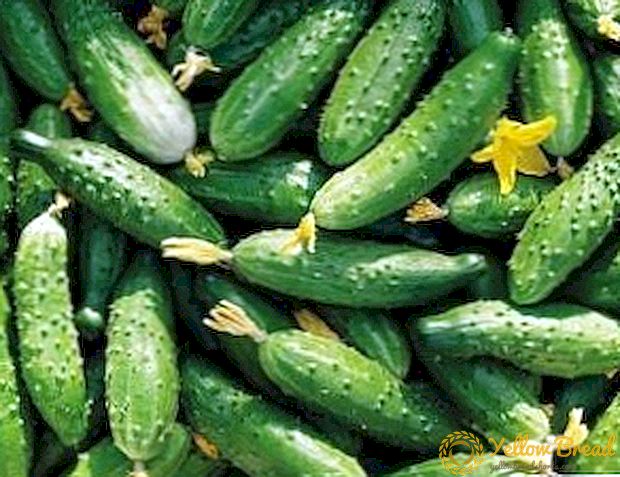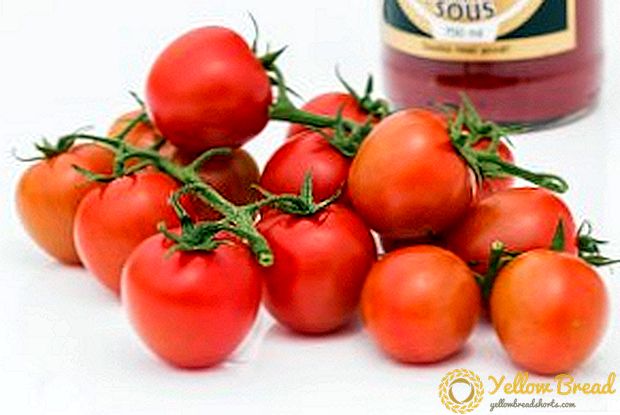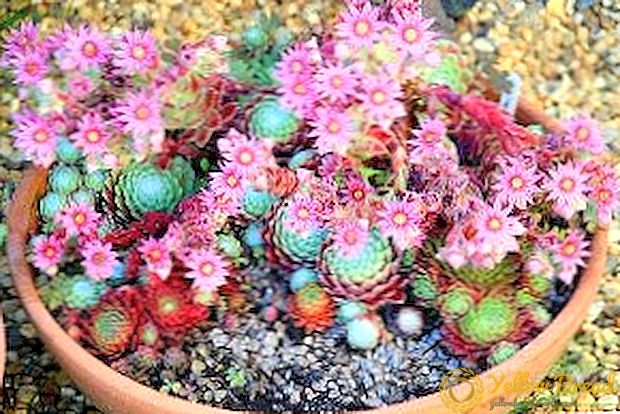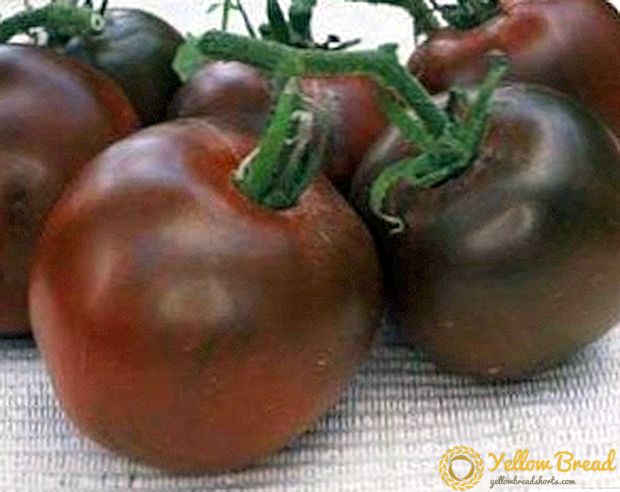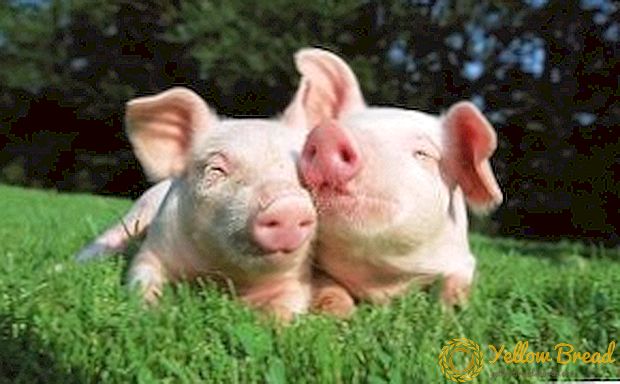
Getting fresh and high-quality pork at home is not so difficult.
Moreover, many people come to the decision to engage in domestic pig-breeding, especially if they have repeatedly come across meat fakes and “not the first freshness” products.
Therefore, the experience of such domestic animal husbandry has been accumulated very large, which makes it possible at the stage of the idea to be thoroughly grounded, and also to study the pros and cons in breeding pigs.
We also decided to devote an article to this issue in order to acquaint you with the basic basics of the choice of breeds, the preparation of the necessary conditions of detention and many others, which will certainly be useful to any pig breeder.
Breeds of pigs: which one is better to choose for maximum productivity?
It is unequivocal to say that one or another breed is best suited for breeding at home is difficult. After all, most of the existing breeds today can fully adapt both to individual content and to cultivation on an industrial scale.
In any case, the home content will still be more effective for gaining body weight.
When choosing a breed of pigs, you most likely need to pay attention to what type of performance it belongs to, and which type you need.
In pig breeding, the following are distinguished. types these animals:
- Greasy pig type
From the very name it becomes clear that the main purpose of such animals is to obtain a large amount of fatty tissue or fat. Naturally, the meat on the carcass also remains a very large number, but at the age of 0.5 years in such pigs, the growth of muscle tissue somewhat slows down.
Due to this, it is especially intensive accumulation of adipose tissue. One pig carcass, which is of this type, may contain about 40-45% fat.
The amount of meat on the carcasses of greasy pigs can reach as high as 53%. Externally, these pigs are distinguished by their rough and wide body.
The front of the body is usually much heavier than the back, while the ham also reaches quite large sizes.
The most famous breeds of greasy pigs are the Ukrainian steppe, Mirgorodskaya, Large black, Hungarian Mangalitsa, Berkshire.
- Meat or bacon pigs
This type is characterized by the fact that animal muscle tissue develops very intensively, while the development of fatty tissue lags behind somewhat.
Most breeds of this type can boast of very rapid growth of their offspring: with proper and intensive feeding, by the age of 7-8 months of life they are able to reach a mass of 100 kilograms.
Often, the amount of meat produced from a single carcass of such pigs can be from 58 to 68%, although sometimes this figure can reach up to 80%.
The amount of fatty tissue can vary from 21 to 32%. In shape of the body, beef pigs are often quite elongated, with a shallow chest.
In this type, the rear part develops especially intensively, as a result of which, it is considerably ahead of the front in size.
Representatives of bacon pigs include the English Great White Pig, Duroc, Landrace, Vietnamese Vislobryukh, Estonian Bacon Pietrain, Tamworth.
- Universal type of breed of pigs
This type has another name - meat. Even before they reach adulthood, representatives of this type are able to produce large quantities of tender meat.
At the same time, they are also able to gain fat mass quite intensively. In general, the weight comes from them quickly, even with standard feeding with food waste.
In general, the indicator of the amount of meat that can be obtained from a single carcass can vary from 53 to 65%, and fatty tissue - from 29 to 37%.

What are the conditions for keeping pets like pigs?
Although the pig as a whole cannot be called an overly demanding animal, it is worthwhile to take into account some of the necessary conditions. After all, not only the productivity of the animal, but also the possibility of breeding pigs will depend on it.
The best thing is to provide the animals with a spacious shed. At what, its preparation should be addressed even before the purchase of the young. So, the shed should consist of the following mandatory parts:

- Corrals (machine tools) for the constant maintenance of animals. They should also be divided into two conditional zones - a place for feeding, where the trough will stand, and a den, where the animal will spend the rest of the time.
A young machine will be sufficient machine size of 3m2, for a pregnant sow it needs to be increased by 1 m2, and for the suckling - up to 6 m2.
- The space that will serve as a place for walking animals in the warm season.
Since some breeds of pigs can be kept on the run almost around the clock, there should be a shed above such a space (or at least a part of it).
- Specially dug shallow pit with water in which animals can swim.
It should also not be forgotten that a pig is a rather large and mobile animal. In particular, both sows and boars, are very often prone to breaking partitions, undermining the floor.
Of course, in the summer, they will be able to satisfy this need on the run, but for keeping during the cold season the fences must be very strong.
Do not forget that the roof of the room of the pigsty should be strong, warm and waterproof. Such characteristics should be taken into account and to the walls, which should protect animals from freezing.
The floor must be not only strong, but also warm. To him must be brought gutters, by which it will be possible to remove animal excrement.
Also, in the pigsty it is important to have and electric lightingwhich is included in the period of farrowing and the first weeks of raising young offspring by a sow. Young piglets will also need heaters.
Constructed from materials capable of retaining heat, the sty should be whitened from the inside. This requires the usual sanitary and hygienic considerations, which are an opportunity to prevent the spread of various diseases.
The best floor for pigs is wooden, from ordinary boards. Also, the floor must be made under a slight slope so that the water and urine of animals can flow along it. But the fences of machine tools can even be made of metal, because wooden can not boast of strength and durability.
The area for walking should be quite extensive, especially if it is planned to produce a large number of individuals or a sow with young offspring.
Corral less than 10 m2 is not even worth doing. In the pen also should be set drinking bowl for pigs, but it should be put on a small hill. Otherwise, the animals will pollute the water they contain.
Discussing the features of the necessary diet for animals

Stern for pigs must contain as little fiber as possible, because their stomachs are not able to fully digest such food. Thus, it is better to give animals concentrated feed, and juicy and coarse to use as additives.
In this case, there are two types of feeding: wet and dry.
In the first case, animals are given masters of bred with water. This is, in fact, the traditional way of feeding, when animals are given food waste and cooked root vegetables.
On the one hand, this method is very simple, since it does not require the purchase of any additional feed, and on the other hand, it is not capable of producing a particularly intensive increase in the weight of pigs.
Therefore, if you still want to rely on the rapid production of large quantities of meat, it is still more rational to use dry food. With them, and less hassle, and the result of such feeding will be more noticeable.
The only thing - along with dry feed pigs will need to be given plenty of water to drink.
But besides this, it is necessary to take into account the peculiarities of each feed, and the state in which it is better to give it to animals:
- It is important for pigs to produce a lot of grain, but by no means as a whole.The animal will of course eat it, but the pig cannot fully chew the grain, and most of it will come out with the feces.
- Potatoes can be used as the basis of the diet of these animals, especially if you apply a wet type of feeding to them. However, tubers are given to pigs only when cooked. Before cooking, they must be washed, but water from potatoes should not be given to animals.
Raw roots are given only in small quantities, and only as vitamin supplements.
- You should not give a large amount of feed at one time, since they will still remain in the trough, which will have to be constantly cleaned.
- As a source of protein for pigs, it is important to add fish or meat and bone meal, oilcake and fodder yeast, legumes, and skimmed milk. Protein is especially important for meat breeds of pigs.
Types and rules of feeding pigs

Depending on whether you want to get more fat or meat as a result of feeding your animals, the way of feeding will depend on it.
If the breed of pig meat, and you want to have lean meat with a 3-inch layer of adipose tissue, then fattening of small pigs can be started already from 2.5 months and continue until they reach the age of 6 months.
If all the necessary instructions are followed, in such a short time the pig will reach a mass of 90-100 kilograms. So, while the pigs have not reached 70 kilograms of weight, and give:
- About 5 kilograms per day of various chopped greens (peas, legumes, clover, alfalfa).
- No more than 1.1 kilograms of concentrated feed, which can be fully replaced by the same amount of food waste from your own kitchen.
Starting from 70 kilograms of pigs, they start fattening even more intensively: greens are already given 6 kilograms per day, they also add up to 5 kilograms of boiled and fresh pumpkin and beets, about 2 kilograms of potatoes, the amount of concentrates should be increased to 1.5 kilograms.
To maintain a healthy digestion and a good state of the animal's body, it is also given 5-25 grams of chalk and 10-35 grams of attorney salt.
For real marble pork, fattening starts at 2.5 months, when the pigs already weigh 25 kilograms, and boars were neutered at 2 months of age. In the diet include:
- 3 kilograms of fresh chopped greens.
- 1.5 kilograms of skim milk.
- 1.5 concentrates.
- 2 kilograms of pumpkin and beet.
- To 20 grams of table salt.
- Supplements of animal origin in small quantities.
At the beginning of fattening the daily weight gain of 450 grams is the norm, but starting from the age of 5.5 months and the subsequent time the weight gain should be at least 500-600 grams.
With such feeding at 7 months, the animal must weigh from 90 to 95 kilograms. Also, to get good bacon, pigs should have plenty of space for walking, they are fed no more than twice a day.
The most effective is fattening, aimed at obtaining a large amount of fat. To do this, it is better to fatten either sows or that young stock that has already gained 100 kilograms of weight.
Use for this recommended feed rich in carbon, that is, corn, potatoes and beets. In order to achieve a daily weight gain of 1 kilogram in the summer, the diet of animals consists of such a quantity of products:
- 4 kilograms of green fodder.
- 3.5 kilograms of pumpkin.
- 3.3 kilograms of concentrate or food waste.
- Not more than 55 grams of salt.
What you need to know about insemination of sows: we get our own offspring

Often for breeding pigs they buy young stock on the market, but you can keep your own sow.
However, it should be borne in mind that her puberty does not occur before 8 months, and the farrowing occurs 115 days after fertilization.
For mating you need to use a pig that has reached a mass of 100 kilograms, without defects. Before this, it is important to feed it well, saturating the diet with plenty of vitamins.
In order to carry out the mating, a sow should have a hunt - she will start to behave very restlessly, redness will appear. It should be flattened with a boar after 12 hours, or it can be fertilized independently. After fertilization, the first 3 months the pig should receive regular food, and later it is made more concentrated.
How to grow a good young: the rules of care for pigs from birth
Piglets are born very weak and even with good supervision of both sows and humans there is a big risk of their death.Therefore, even before farrowing should take care of the necessary conditions for the maintenance of newborns and prepare the necessary food.
So, the temperature in the pigsty should not fall lower than + 18ºС. The room must be well ventilated and dried.so that there is no dampness anywhere, take care of artificial lighting.
In terms of feeding small piglets, it is best to feed on sow's milk, which will increase their immunity and allow them to quickly gain the necessary weight.
From the third week onwards it is important for the young ones to start giving other foods that stimulate their further intensive growth. However, milk can be given from the fifth day of the life of animals.
Also, you can add various steamed concentrates, from the 20th day of life - boiled and mashed root vegetables. Taking pigs from pigs is not recommended earlier than 4 weeks after farrowing.
If there are no sows, the piglets are fattened with cow or goat milk from the nipple. From the second week they begin to fully feed. Also, at such a milky age, it is important for them to inject special vitamin shots with iron.
Necessary aspects of care for pigs
It is not at all difficult to care for pigs, since the main aspects that need to be done are feeding, looking after the young and ensuring optimal conditions for the housing. In particular, among the latter should be noted:

- Some breeds of pigs do not tolerate temperature fluctuations, so in the barn it should always be between 12 and 16ºС. For young stock - from 18 to 20 ºС.
- We can not allow the humidity in the room to rise above 85%, the best option - 70%.
- We can not allow cold and drafts in the pigsty.
- It is important to comply with the hygienic-sanitary standards for keeping pigs, to constantly clean the floor in pens.
- Youngsters definitely need a walk.
- Do not allow contamination of water in drinking bowls.
- Feeders must be cleaned from food residue and periodically rinse with a brush.

